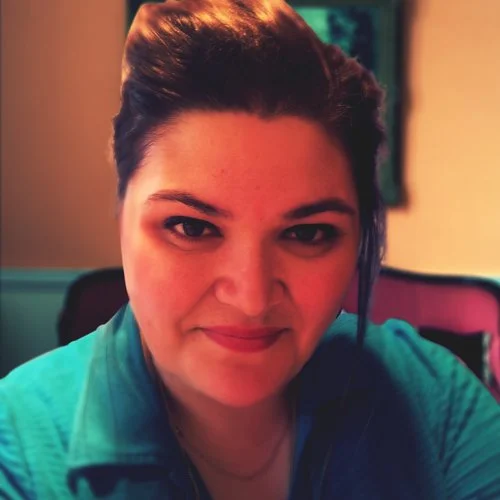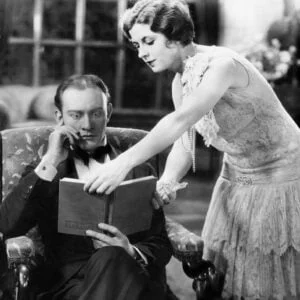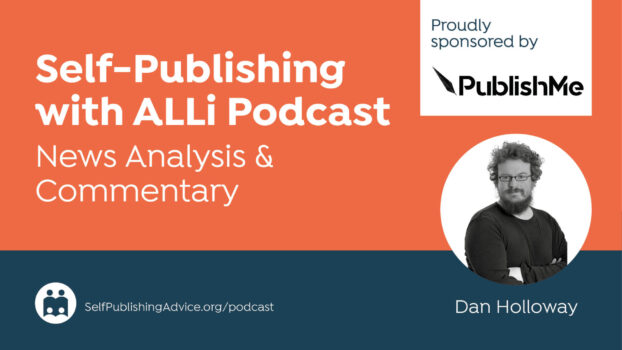Australian professional book designer Scarlett Rugers offers advice on the best way for self-published authors to build a great working relationship with book designers – and her top tip is pleasingly straightforward.
 The one key to making the author/book designer relationship awesome is simple: just talk it out.
The one key to making the author/book designer relationship awesome is simple: just talk it out.
Speaking as a professional book designer, I know that authors can be hesitant to contact me for many reasons:
- they don’t know what to expect
- they don’t know what is expected of them
- they can’t trust a creative
- they're unsure of the outcome
- they're worried how much it's going to cost
- they're not sure that I will listen to their ideas
They need not fear. My purpose is to empower you to be the best author you can be. Getting a professionally-designed book cover to make you feel like a traditionally-published author is the start of that. But it doesn’t just happen, it’s something that both you and your designer have to work towards.
The Nature of the Author/Designer Relationship
The author/designer relationship can be relaxing, and easy going, and open. Whenever I talk with an author, I tell them straight up that the most important thing about working together is communication. This is not me dictating to you what will work best and that’s that, nor is it you telling me why we have to have <insert element> on the cover and there’s no leeway either way. It is about coming together into the same place, being open to change, being outside of our comfort zones and appreciating and respecting the input of the other person.
Creativity is all about interpretation and, while I hope you will trust me to lead the project into the golden lands of high profit, I will always listen to your feedback and try it out. But it’s more than just interpretation, it’s about making sure you know what’s happening at all times.
Collaboration is Key
Hiring a designer is about collaboration. It’s a two-person effort, and it can be rewarding and really, really fun. Confusion, misunderstanding and negativity all stem from a lack of communication, so, as I said at the start: talk it out.
When you work with a creative you don’t have to go in blind or confused. It’s okay to ask questions, to seek clarity. It’s okay to tell the designer you don’t understand something. This may surprise you but: I don’t expect you to know how this works. That’s my job! If you don’t ask me, you won’t know.
The Power of Empathy
I’ve been writing since 1998, and it is my first love. I know how it feels to be the author, not knowing what the hell to do next or whether the money is going to be worth the investment. You’ve spent months on this manuscript… years… and now publishing is so close you’re getting paper cuts. I get it, I really do. That’s why I take my time to read your work before I start, to dig out the killer themes in your book that will translate beautifully onto the cover. Reading the book is such a vital part; a lot of the time I draw themes and concepts out of a story that the author didn’t even recognize were in there. I want to give you the best chance of success.
This design belongs to both of us, it is just as important to me as it is to you.
Let the process of working with the designer be a give-and-take process. I approach the design in the same way I want my clients to: open to change. It’s okay to be outside your comfort zone – the only way you can improve is by having a fluid mind. Sometimes, what I originally judged to be a bad idea put forward by my client actually turns out much better than expected, and the authors I work with take the same risks.
So have faith in your designer, let them help you be a professionally published author. What have you got to lose?






[…] How To Build a Great Relationship Between Author and Book Designer […]
Scarlett,
If an author offered you a percentage of the book, rather than a flat fee. Is that something you would consider, or is that just not how things work? I am asking because I just began writing and this was a topic that I just didnt know how it works.
AJ
Like the other commentators, I do wonder about the sheer amount of time involved in doing everything you do, and fair compensation for that time.
I suppose from your perspective I’m part of the problem, because I just got a cover from a seller on fiverr. From memory I think it wound up costing me $35. I did get to participate in the design – although I just nudged elements around on the page until they “looked right”.
At the same time, I know I couldn’t possibly expect anyone to do all that you talk about doing for $35…
:-\?
Hi Theo,
Sorry for the late reply! Now back in the office after two weeks holiday.
You’re absolutely right, I wouldn’t do all that I do for $35. That’s why my prices are what they are. I feel at the moment it is a balance between offering as much value as I can to the clients, while still being within their budget.
Although reading a book does take time and energy, it is that process of taking from the narrative and giving it an image that is what I love so much. An interpretation that will make the reader seize the book and say “YES”. If I can’t truly draw from the story, if I’m sort of flying blind, I feel like I’m discarding an important part of my job.
So long as the authors I work with can have patience, understanding and allow me to do what I need to do when it comes to reading the book and offering concepts, then reading books will never be a downside of my job 🙂
Cheers,
Scarlett
I’m very impressed by your commitment to your author clients, Scarlett, and I totally understand why you want to read the book before designing the cover, as it will help you not only get ideas for the cover but also get to know the author’s personality better too, whether it’s a full read or a quick sample of the text. I pick up a lot from looking at their cover design too – provided it’s been done well, of course!
I’ve produced a lot of WordPress websites for authors in the past, and it makes the world of difference if I’m able to read at least the blurb and a sample chapter of the book first, though I may not have time to read the whole thing. I often start out intending to read only a chapter then can’t put it down, which is very motivating because I know it’s a good book that I’m helping to publicise.
The issue of charging is tricky – I’ve never charged anyone for reading their book before doing a website as I’d end up pricing myself out of the market. But if it’s not too long a book, (and I read fast), it may even save me time in the long run, when I’m setting up the website, because it enables me to produce something more appropriate more quickly.
I’m always reading anyway, and I like the fact that this approach takes me outside my comfort zone in books. Even just reading the blurb and the first chapter would be sufficient to make a big difference, though – and I am not sure how a cover designer could do their job at all without reading at least a bit of it.
Yes, reading the book; to literally read as any reader would, then to pick out dominant themes etc would take at least two working days, I should think, for which you would have to be paid, the considering the follow-up of discussing ideas and themes and settling for one cover would take at last another week. Hard work!
How much of the book do you read? I wouldn’t expect a designer to spend that much time on something that isn’t in their immediate job description – and you’re the first person I’ve seen who said, “That’s why I take my time to read your work before I start, to dig out the killer themes in your book that will translate beautifully onto the cover. Reading the book is such a vital part…”
That’s a huge commitment to a book.
How do you handle ideas you get from the writer?
I have a photo I’m in love with, and some other design elements I want – but have no idea (yet) about fonts, placement, and making the parts fit into a whole.
I’m more interested in seeing what I see dimly made actual than in getting someone else’s ideas – how hard is it for designers to work that way?
Thanks – I’m curious.
Hi Alicia,
I do my best to read the whole book. Over the time in my work I’ve learned to speed read, which allows me to get through the book quickly. It also depends on what the author is comfortable with, and if they prefer just to send me a synopsis rather than the entire manuscript (or a few chapters).
It is definitely a huge commitment to the book; I want to give your book the best chance it has of selling.
When the author has ideas they’d like to share, I talk it over with them and work out if it is right for the book or not. As I offer more than one concept in my designs, I often work up one specific concept to your idea and then work with different visuals that I have for the second and third concept.That means you can see if your idea is workable or not, and sometimes it is and sometimes it isn’t. Often you can’t make the call until you see it in front of you.
But that’s just me, I can’t make the call for other designers. If I feel the idea isn’t something that conveys the right message I will say so up front, but I will always be willing to mock it up and see what comes of it (so, for example, your book is a drama thriller with a political aspect, I would not encourage ideas which might look like a romance, a historical mystery, or a horror).
And that’s exactly what I’m talking about in this article- that it must be a collaboration of two minds and to extend the designer the opportunity to do their thing, because that’s their profession, while the designer listen and work with your own ideas without discarding them or finding them invalid, to the best outcome of the project.
I hope that helps 🙂 Please feel free to get in touch with me if you have any other questions!
Cheers,
Scarlett
Thanks for your reply, Scarlett.
It would seem the dream relationship – a designer who actually read the book. I haven’t seen that kind of commitment mentioned on the sites of the designers whose names I’ve been collecting when I see them, people who worked well with indies.
I saved your name, and I’m going to go look at your website.
With DIY comes responsibility, with control comes the fear of being responsible when it doesn’t work. In the past, people could blame their publishers for a horrible cover, or one which didn’t satisfy fans or the writer. Now it’s our fault!
Fortunately, we also have the ability to change a cover that isn’t working, to brand an author’s books, or her series volumes, and to ask our readers which cover they prefer in an informal poll.
I appreciate the inside information on how you work.
Alicia